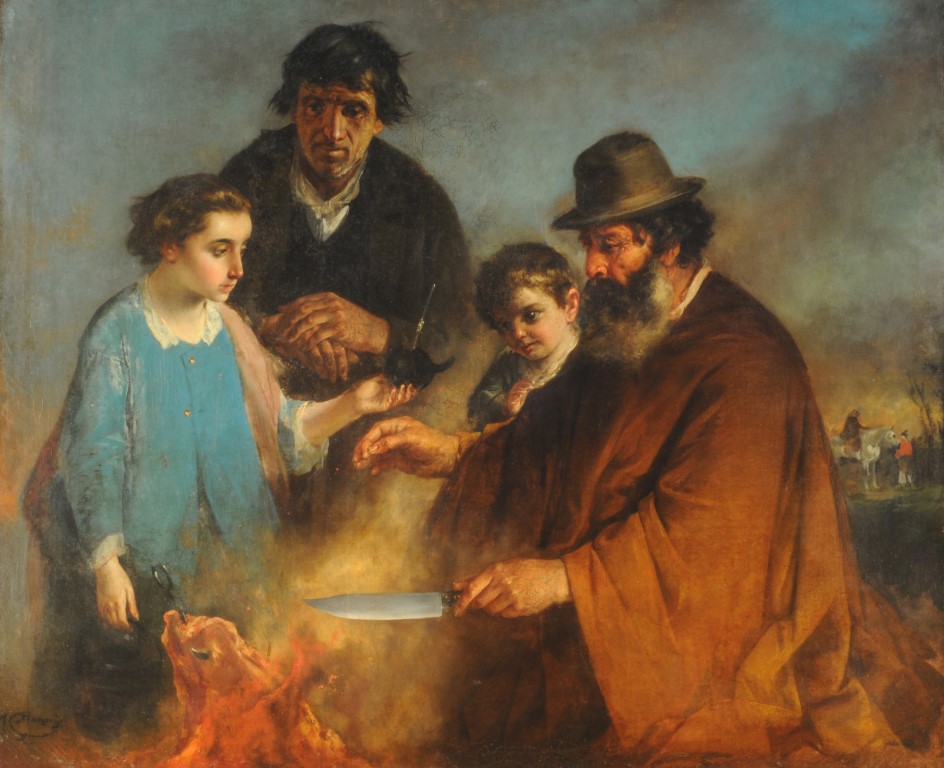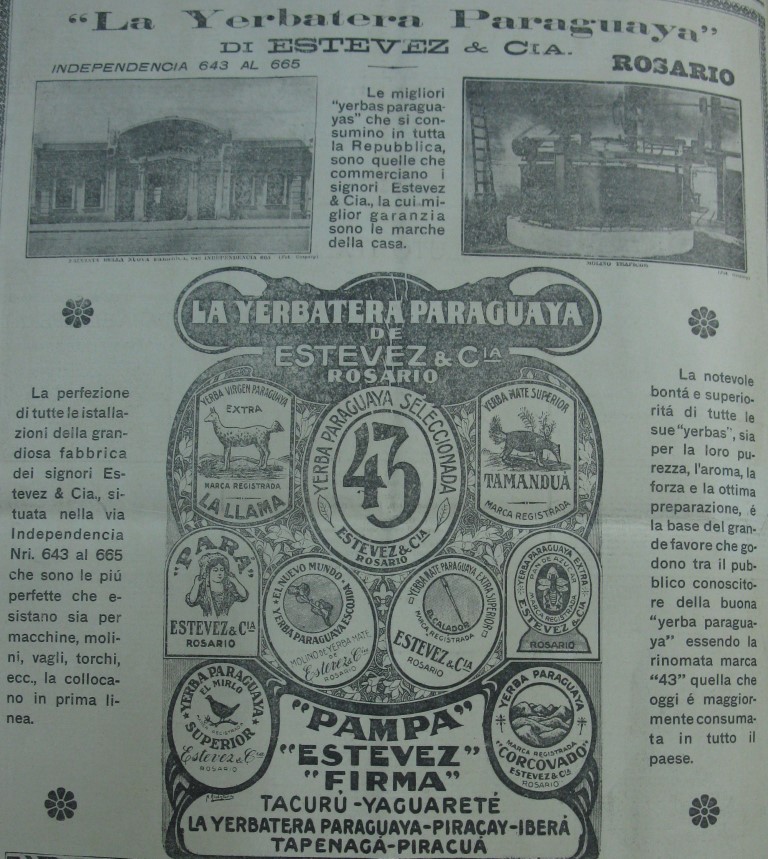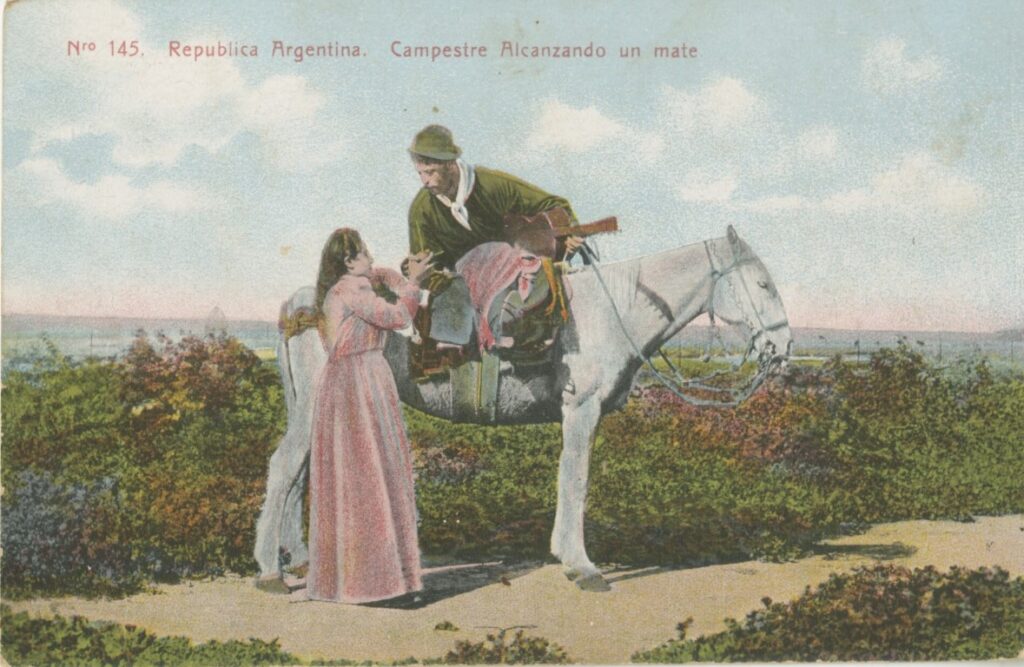
Mate
By Rebekah E. Pite
As with previous generations of new arrivals in the Río de la Plata region, immigrants from Italy who arrived in the late nineteenth and early twentieth century took up yerba mate drinking as a way of belonging in a new land. Like locals, they drank this caffeinated infusion made from a local holly tree (ilex paraguariensis) communally, sharing the same mate cup and drinking the chopped-up yerba leaves through the same bombilla (tube or straw with filter on the end).
Italian immigrants were encouraged by neighbors, earlier arrivals from Italy, and even employers to join the mate circle.

Ignacio Manzoni, El asado, ca. 1871.
Source: Museo de Bellas Artes, Buenos Aires, Argentina, https://www.bellasartes.gob.ar/coleccion/obra/2890/
In this painting from the 1870s, artist Ignacio Manzoni (from Milan) featured immigrant children serving a mate to a local man teaching them how to make an asado (beef barbecue).
In the early twentieth century, Italian railway workers, received mate for breakfast. And Italian-language newspapers promoted local yerba brands to their readers. Zaverio Fumagalli, of Italian descent, became a major postcard editor in Buenos Aires and published several postcards featuring the mate ritual as an emblem of Argentine culture.

Full page ad for La Yerbatera Paraguaya in Italian-language newspaper.
Source: Advertisement, La Patria degli Italiani, September 20, 1910, pg. 4.

Postcard, Rural woman offering mate, 1911.
Source: “Rural woman offering a mate,” Argentine Republic, Z. Fumagalli, ca. 1911, Special Collections and College Archives, Skillman Library, Lafayette College, Easton, Pennsylvania.
Because yerba cost less than tea or coffee, drinking mate made economic sense for immigrants with fewer resources. Better-off immigrants from Italy (and elsewhere) could enjoy coffee at home or in local cafés, but most drank yerba mate too.
Immigrants’ mate consumption shifted their identity. As Uruguayan anthropologist Fernando Assunçao put it, “Through the native sap that begins to melt into their blood, they begin to become Americans, sons of the new homeland.” Locals in the Río de la Plata region did not invite immigrants over and then decide what to serve them. Instead, they invited newcomers to join a unique local ritual where welcoming outsiders had long been a defining feature.
Further reading
- Fernando O. Assunçao, El mate (Montevideo: ACRA, 1967).
- Pau Navajas, Caá Porã: El espíiritu de la yerba mate, una historia de plata (Corrientes: Las Marías, 2013).
- Rebekah Pite, “La china cebadora: Género, mate e identidades nacionales en el Río de la Plata, 1869-1929,” Indicios, núm. 1 (2022): 24-48.
- Rebekah Pite, Sharing Yerba Mate: How South America’s Most Popular Drink Defined a Region (Chapel Hill, NC: University of North Carolina Press, 2023).
- Javier Ricca, El mate: Historia, secretos y otras yerbas de una pasión rioplatense (Buenos Aires: Sudamericana, 2009).
- Julia Sarreal, Yerba Mate: The Drink that Shaped a Nation (Berkeley, CA: University of California Press, 2023).


